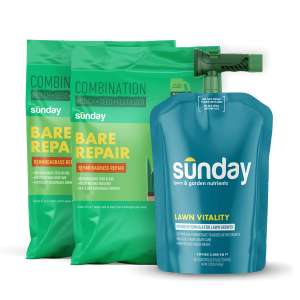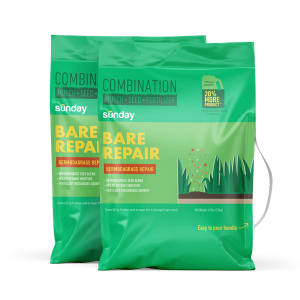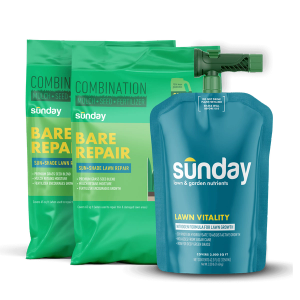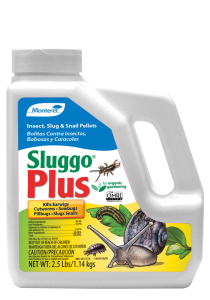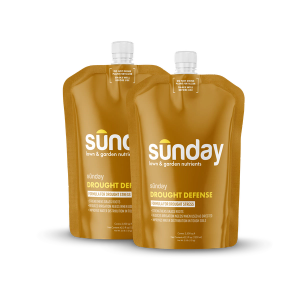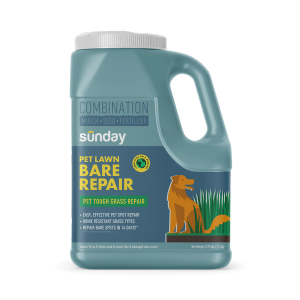What is winter overseeding?
Winter overseeding is the practice of sowing grass seeds over your existing lawn during the colder months. Its primary purpose is twofold—to restore thinning or patchy lawns and to maintain a lush green appearance throughout the winter.
Benefits of winter overseeding
It's really simple. Winter overseeding maintains a green lawn all year long.
Warm-season grasses like bermudagrass and zoysiagrass have a tendency to enter dormancy and turn brown during winter. But by overseeding with a thick layer of hardy, cool-season grass (perennial rye, for example), it’s possible to maintain a green lawn until your warm-season grass wakes up in the spring.
Is winter overseeding right for my lawn?
A few things to keep in mind before deciding if this process is right for you:
- Suitable climate. This practice only works in the warm-season grass lawns located in the southernmost region of the US, so location is crucial to success.
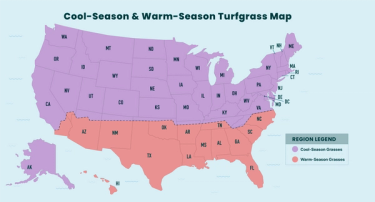
- The right grass species. A bermudagrass lawn works best for winter overseeding. While zoysiagrass and St. Augustinegrass can be substituted, this method is generally less successful for those species.
- Enough sun. This practice is best for full-sun yards. If your yard has any shaded areas, it can be difficult to ensure that the cool-season grass will die back after winter when warm-season grass will re-emerge when the temperatures increase.
- Time for labor and upkeep. This practice can be labor-intensive, requiring a commitment to watering and mowing at a time when many people are taking time off from lawn care. Tip: If there are water restrictions in place where you live, this method might not be right for you.
Sunday Tip:
Make sure you can water this type of year-round lawn before you plant grass. If there are water restrictions in place where you live, this method might not be right for you.
When should I overseed in winter?
Aim for mid-October to November. It's the sweet spot when warm-season grasses are dormant, and your lawn is ready to embrace the cool-season grasses to give you that year-round green grass.
How to overseed your warm-season lawn in winter
If you live in a warm climate, can maintain the above recommendations, and desire green grass year-round, then winter overseeding is a great DIY fix for you. Ready to give it a go?
- Scout and prep. In mid-October take an inventory of your lawn. Remove debris, check sprinkler coverage, and ensure you have the right grass seed species.
- Mow low. In mid-October to early November, it's time to adjust your mower to cut more than half of your normal cut. If you typically mow your grass to a height of 3 inches, now's the time to cut it down to 1.5 inches. After mowing, be sure to bag the clippings. This ensures that when you spread the grass seed, it will have direct contact with the soil, promoting better growth.
- Seed x2. Right after mowing, spread double the recommended seed rate of perennial rye. The winter overseeding rate for ryegrass is about 4 ½ - 10 pounds per 1,000 square feet.
- Water your new grass. From December to January, water regularly to support your growing grass. On the day you sow seeds, soak the soil well. Afterward, keep the soil moist daily, but don't overdo it. How much and how often you water will depend on your climate and soil type.
- Increase your watering over time. From February to mid-May, as the sun climbs higher and temperatures rise, your cool-season grasses will need more water. Adjust your watering based on local precipitation and any restrictions in your area.
- Transition back to warm-season. The arrival of high temperatures signals the impending departure of your winter grass. In mid-May or June, give your warm-season grass a nudge out of dormancy by cutting back on water and mowing your cool-season grass very short. Once the cool-season rye is cut back, your warm-season lawn will get enough sunlight and warmth to grow.
Ready to add winter overseeding to your lawn-care routine? Your year-round green grass will earn you plenty of bragging rights!
Cited sources
Overseeding Winter Grasses into Bermudagrass Turf. University of Arizona Cooperative Extension.
Perennial Ryegrass. University of California Cooperative Extension.







